Tensan Silkmoth
Antheraea yamamai
This beautiful silkmoth from Japan produces a yellow-green silk that retains its beautiful coloring after degumming. The moth is related to the Chinese Tussah moth, and the American Polyphemus moth; you can see the resemblance in the shape and patterning of the moth, as well as in the caterpillar. The caterpillars eat oak leaves. They are famous for being shy caterpillars; some of my sources warned that the caterpillars could drop off the branches and die if they were startled! Fortunately, I didn't have any problems with that, although I noticed they would stop stock still any time I opened their container. This species developed exceptionally quickly; they went from eggs to cocoons in under four weeks, and from eggs to moth was just under two months.
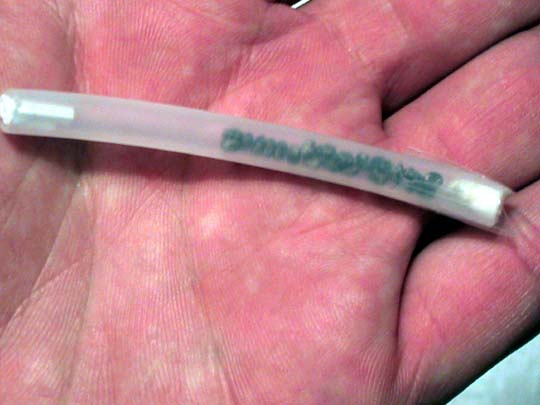
I got the ova for this moth in a small piece of aquarium tubing. This is a clever way to keep them from getting crushed in transit.
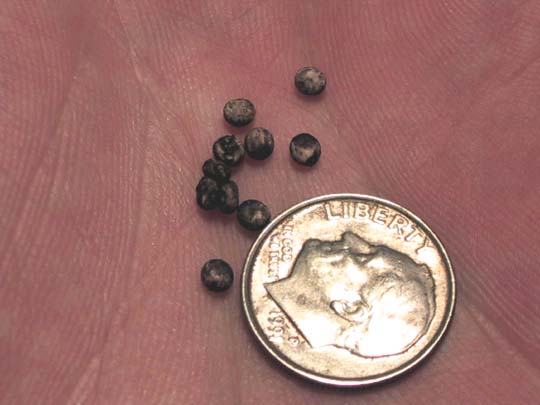
The eggs are similar to the other Antheraea eggs. A lot of these appear to be hollow, which usually indicates that they are infertile. Since the caterpillar overwinters as a fully developed insect inside the egg, there isn't a long wait for them to hatch. March 21, 2005.
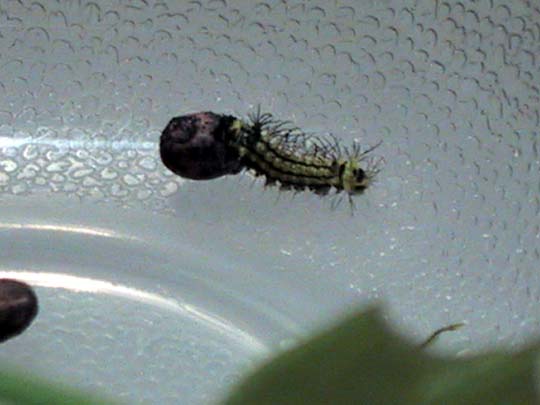
The hatchlings started within two days. This poor little guy got his head stuck inside the egg; I ended up having to hold on to the egg shell so he could back out. The things we do for our friends! March 23, 2005.
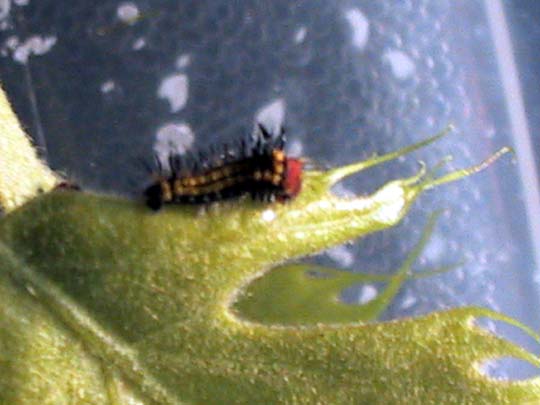
Sorry this is blurry - the camera is tough to focus this close. This is a hatchling; they are very hairy, and have pretty red heads.
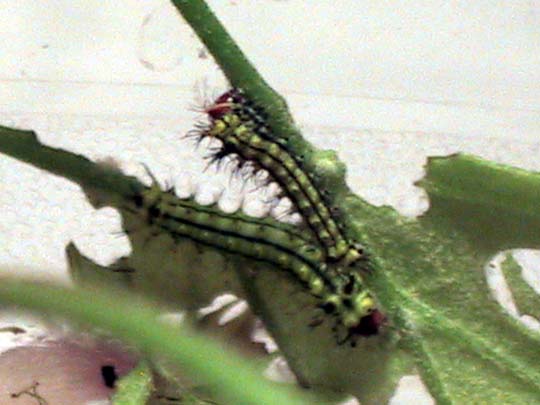
These are still first instar, but are a couple of days older. They are eating very vigorously, and growing much faster than other Antheraea caterpillars I've raised. I think that fully-developed-in-the-egg thing gives them a head start. March 27, 2005.
Now, I have to confess, I fell down on the job. I didn't take any second-instar pictures, and only caught the end of the third instar. The camera was packed away somewhere, and I just got busy. So we'll pick up eleven days later - these guys grew FAST.
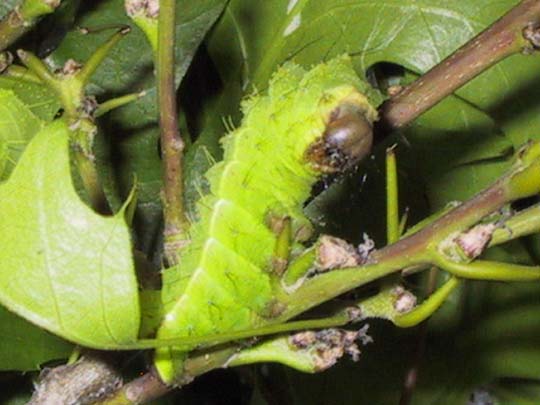
This is a third-instar caterpillar shedding its face. April 7, 2005
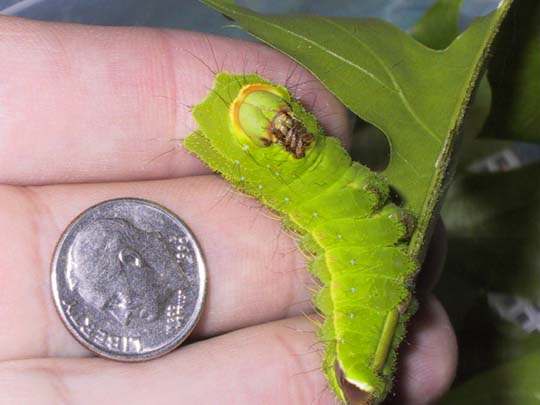
This is a fourth instar caterpillar; it's the same age as the one waiting to drop its face, but has made it to the next stage already. They have beautiful green faces. Other than the face, though, you could easily mistake them for a Tussah caterpillar.
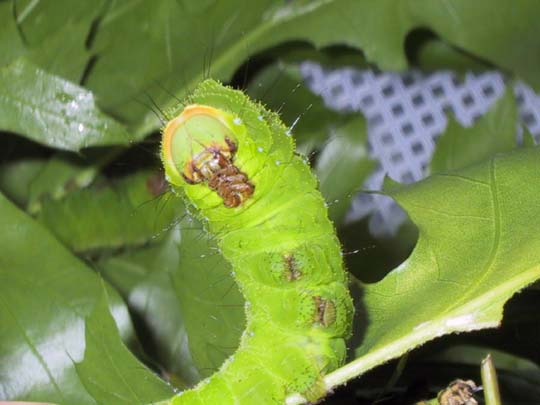
They sit in this pose a lot. It always looks like they're rubbing their hands together. I picture them saying "Excellent." April 7, 2005.
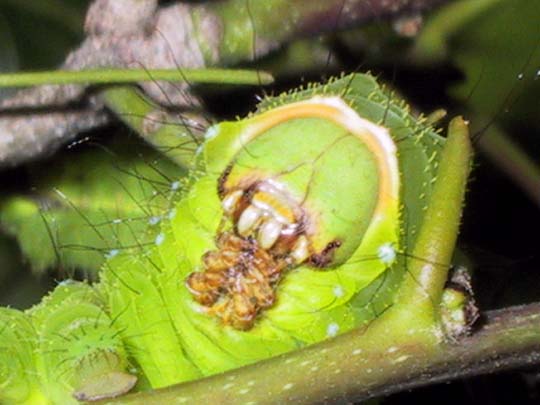
Fifth instar, already. April 9, 2005.
I missed getting pictures of the spinning. They spin cocoons that are essentially the same as the Tussah cocoons - only pale yellow-green. The most amusing thing, to me, is that they selected spots against the flat of the container, with no supporting branches, to spin on - the cocoons were only against one flat wall. It seems like a lot of extra work, making the infrastructure, but it makes for nice cocoons.
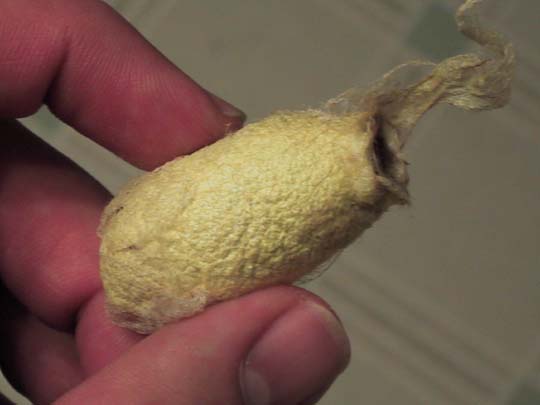
This is one of the cocoons, just after eclosion (hatching out of the moth.) May 22.
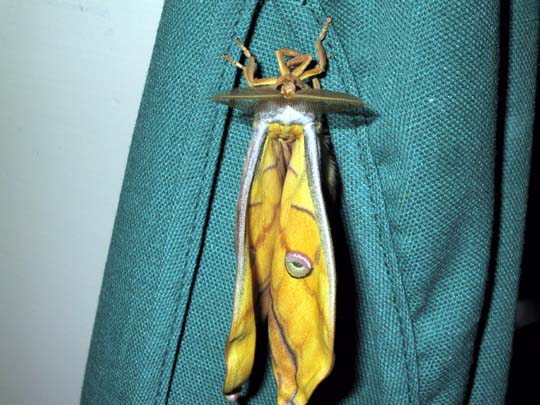
The moth climbs out of the cocoon, and even before it expands its wings, I can see the beautiful chrome yellow of the wings. I think these are some of the best-looking moths I've seen.
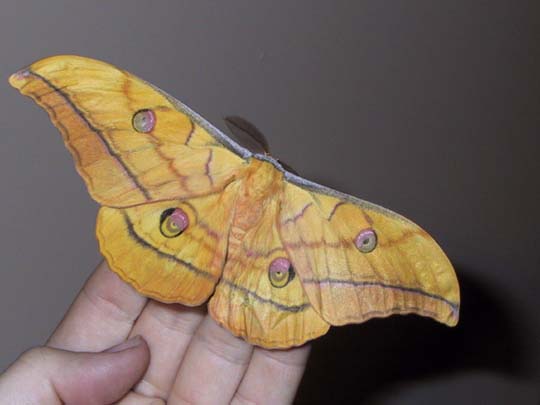
Over the course of an hour or so, the moth expands and hardens its wings. This male has a six and a half inch wingspan; it's a BIG moth.
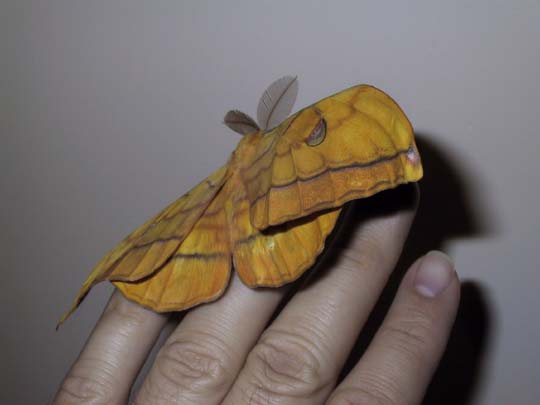
This moth isn't content to sit still very much. He keeps walking over my hand.
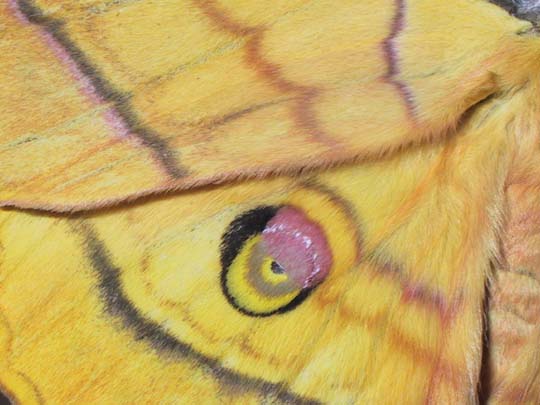
Closeup of the rear wing and side of the body. The yellow and pink are vibrant.
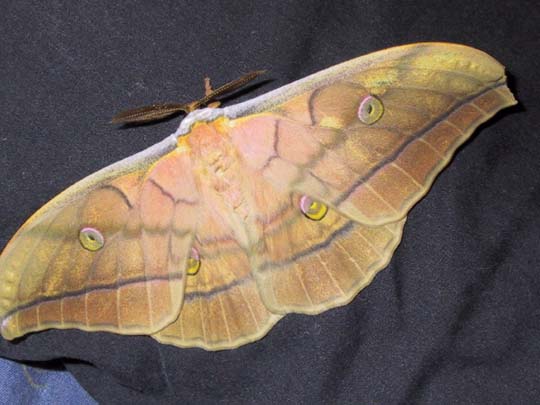
The moths also have a darker color range; I had one come out in the dark phase.
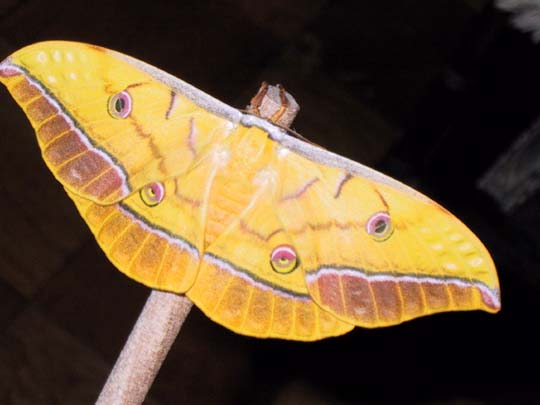
Out of this batch, I ended up with six viable cocoons. They hatched one after another... five males. Finally, this beautiful female hatched - but almost a week after all the males were dead. So there's not going to be a second generation for this group this year - I'm planning to try again with fresh eggs later in the season. June 9, 2005.